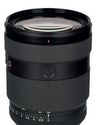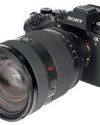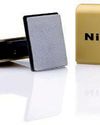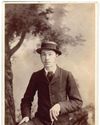It’s been half a century since the release of the Leica M4 – an underrated classic that helped save the company. Geoff Harris tells fascinating story.

This year marks the 50th anniversary of the release of a particularly interesting Leica range finder, the Leica M4. The M4 might not have the iconic status of the M3 (much of which is down to Cartier-Bresson’s patronage), but in many ways it’s a more convenient camera to use, and there are lots of examples around in great condition. ‘If the M4 had appeared in 1954, it would have the same reputation as the M2 or M3,’ says Leica’s director of product management Stefan Daniel. ‘It’s a more usable and better handling camera in many ways, as the film is much faster to load and rewind.’
So, if you’ve always wanted a vintage Leica film camera, but would like something a bit more unusual and quirky than an M3 or M6, it is great value for money – and, of course, takes a wide range of compatible lenses, the quality of which is legendary. The M4 employs a dual-image range finding device to help you focus and offered support for a wider range of lenses than its predecessor; rather more challenging for the modern photographer is the lack of any built-in metering. The relatively bulky and unloved M5, introduced in 1971, was the first Leica range finder to offer through-the-lens (TTL) metering.
So to get usable shots, you need a good working knowledge of the relationship between aperture, shutter speed and film speed, rather than relying on automated electronics. To make the process somewhat easier, many M4 owners buy a separate handheld light meter, and then enter the settings. While the lack of metering may seem a pain, over time it makes you sharper at working out the correct exposure settings for a range of lighting conditions. You are likely to end up a more technically confident photographer than somebody who relies on their histogram.
This story is from the {{IssueName}} edition of {{MagazineName}}.
Start your 7-day Magzter GOLD free trial to access thousands of curated premium stories, and 9,000+ magazines and newspapers.
Already a subscriber ? Sign In
This story is from the {{IssueName}} edition of {{MagazineName}}.
Start your 7-day Magzter GOLD free trial to access thousands of curated premium stories, and 9,000+ magazines and newspapers.
Already a subscriber? Sign In

Calling The Shots: A Queer History of Photography
Offering an unprecedented view of photographic history through a queer lens, this is a wonderful and powerful book, says

Large-aperture standard zoom, too
SONY has also revealed a new premium standard zoom, the FE 28-70mm F2 GM.

Super-fast, high-res Sony Alpha Ai II
SONY has announced its new professional full-frame flagship camera, the Alpha A1 II.

39 awesome accessories
Our round-up of the best accessories we've used and reviewed this year, along with some old favourites. There's something here for every budget, starting from just £7, including tripods, bags, filters and much more

Such a thing as society
This autumn sees the launch of a major new book and exhibition devoted to examining the multiplicities of photography during 1980s Britain. Peter Dench finds out more

Join Club
The sociable Canvey Island Photographic Club is keen to grow its in-person meet ups

Capturing flight
Winners and finalists of Bird Photographer of the Year share their tips for success with Hollie Latham Hucker

140 years of change
AP has become the world’s oldest surviving consumer photo magazine because we have moved with the times, says Nigel Atherton

Preserving history in platinum
A deep dive into the meticulous art of platinum printing, and the collaboration between the Royal Geographical Society and Salto Ulbeek. Mike Crawford explores how they brought historical photographs to life with enduring beauty and precision

Life in the past lane
What was life like for an amateur photographer in 1884? John Wade takes a trip back in time